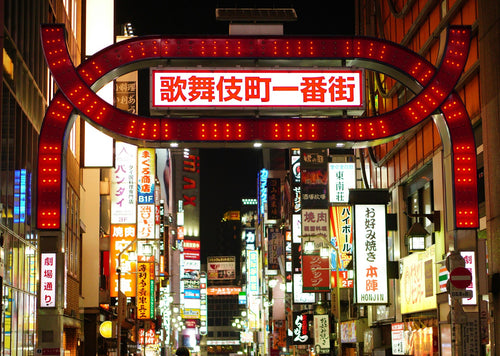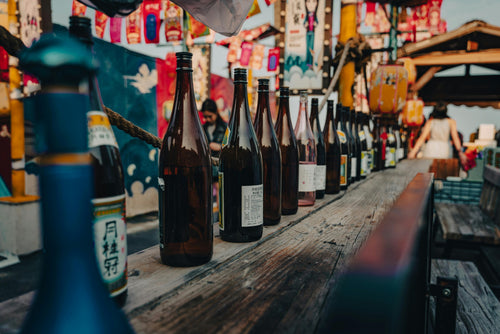
Beginner’s Guide to Japan Travel: Preparations & Key Tips
Traveling to Japan for the first time is an exciting experience filled with unique cultural encounters, incredible food, and beautiful landscapes. To help make your trip as smooth and enjoyable as possible, this guide provides essential preparations, key travel tips, and insights into Japanese customs. From budgeting to understanding basic etiquette, these tips will prepare you for a memorable journey in Japan.
Contents
1. Visa and Entry Requirements
6. Japanese Etiquette and Customs
1. Visa and Entry Requirements
Depending on your nationality, Japan may require a tourist visa. Citizens from several countries, including the U.S., Canada, the U.K., and the EU, can enter Japan visa-free for short-term stays, typically up to 90 days. Be sure to check entry requirements in advance, as these may change. When you arrive, you will also receive a “Landing Permission” sticker in your passport, allowing you to travel within the country.
2. Budgeting and Currency
The Japanese currency is the yen (¥), and cash is widely used in many places. Although credit cards are accepted in major stores and restaurants, it’s a good idea to carry cash, especially when visiting smaller establishments or rural areas. Budgeting carefully can enhance your trip:
- Accommodation: Budget accommodations like hostels or capsule hotels cost around ¥3,000–¥6,000 per night, while mid-range hotels average ¥10,000–¥20,000 per night.
- Food: Affordable meals, such as ramen or convenience store bento boxes, can be as low as ¥500, while restaurant meals range from ¥1,000 to ¥3,000 per person.
- Transportation: If you plan to travel around the country, consider purchasing a JR Pass for unlimited train travel over a set number of days.
3. Accommodation Options
Japan offers diverse accommodation options to fit different budgets and travel styles. Budget travelers can consider capsule hotels or hostels, which are affordable and often centrally located. For a unique experience, ryokan (traditional inns) offer tatami rooms and futon bedding, typically including dinner and breakfast. Mid-range hotels, Western-style hotels, and vacation rentals are also widely available in major cities.
4. Transportation
Japan has one of the most efficient public transportation systems in the world. The Japan Rail (JR) system covers the entire country, and the JR Pass offers excellent value for travelers planning to visit multiple cities. Within cities, subways, buses, and trains are reliable and easy to navigate with a prepaid IC card (such as Suica or Pasmo), which can be used nationwide. Taxis are available but can be expensive compared to public transit.
5. Language and Communication
Japanese is the primary language spoken, and while English is often understood in major cities, it’s less common in rural areas. Learning a few simple Japanese phrases can be helpful. Basic phrases like “Arigatou” (Thank you), “Sumimasen” (Excuse me), and “Konnichiwa” (Hello) are appreciated and show respect. Many signs in transportation hubs are in English, but it can be helpful to use translation apps or have destination addresses written in Japanese for clarity.
6. Japanese Etiquette and Customs
Japan has unique social customs and etiquette, so observing local practices will ensure a respectful visit. Key customs include:
- Shoes: Shoes are removed when entering homes and some traditional accommodations. Slippers are often provided for indoor use.
- Public Transportation: Keep conversations quiet, and talking on the phone is discouraged on trains and buses. Priority seating should be given to the elderly, pregnant, or disabled passengers.
- Onsen Etiquette: If visiting an onsen (hot spring), wash thoroughly before entering communal baths, and do not bring towels into the bath.
7. Japanese Food and Dining Tips
Japanese cuisine offers a wide range of delicious dishes, from sushi and ramen to tempura and kaiseki. Many restaurants display plastic food models, making it easy to understand the menu. Some tips to enhance your dining experience:
- Try conveyor belt sushi (kaitenzushi) for an affordable and fun meal.
- Visit izakayas (Japanese pubs) for casual dining and sampling multiple dishes.
- Payment is typically made at the register rather than at the table.
Be mindful that tipping is not customary in Japan; excellent service is expected as the standard.
8. Essential Packing List
Packing wisely can help you prepare for Japan’s varied climates and ensure a comfortable trip. Essential items include:
- Comfortable Walking Shoes: Expect to walk a lot, as many attractions are best explored on foot.
- Universal Power Adapter: Japan uses type A and B plug types with a 100-volt standard.
- Portable Wi-Fi or SIM Card: Staying connected is helpful for maps, translation, and general communication.
- Weather-Appropriate Clothing: Japan experiences four distinct seasons, so pack accordingly. Lightweight clothing for summer, and layers for winter travel.
Japan offers an exciting blend of modern convenience and rich tradition, making it an ideal destination for first-time visitors. With this beginner’s guide, you’ll be well-prepared to navigate Japanese customs, enjoy the unique cuisine, and immerse yourself in the country’s fascinating culture. Enjoy your journey to Japan!
공유하다
You may also like
-

신주쿠 가부키초 밤문화 가이드
도쿄의 "잠들지 않는 도시"로 알려진 신주쿠의 가부키초 지구는 도쿄의 나이트라이프 중심지입니다. 네온 불빛이 빛나는 거리, 번화한 엔터테인먼트 장소, 활기찬 에너지로 유명한 가부키초는 잊지 못할 밤을 보내는 여...
-

골든가이 추천 바 5곳
도쿄 신주쿠 지구 중심부에 자리 잡은 골든 가이는 이 도시에서 가장 상징적인 바 지구 중 하나입니다. 좁은 골목길과 작은 바로 유명한 이 지역은 도쿄의 과거를 엿볼 수 있는 분위기와 다른 어떤 것과도 비교할 수...
-

일본 사무라이 역사를 발견할 수 있는 최고의 장소 7곳
일본의 사무라이 역사는 명예, 기술, 깊은 문화적 영향으로, 수세기를 거슬러 올라가며 국가의 정체성에 지울 수 없는 흔적을 남겼습니다. 고대 성과 사무라이 거주지부터 갑옷과 칼로 가득 찬 박물관까지, 일본은 방...
-

사케란 무엇인가? 생산 방식과 역사
사케는 발효된 쌀로 만든 전통적인 일본 알코올 음료입니다. 일본에서는 천 년 이상 즐겨 왔으며 독특한 풍미와 문화적 중요성으로 인해 전 세계적으로 인기를 얻었습니다. 이 글에서는 사케가 무엇이고, 어떻게 만들...




